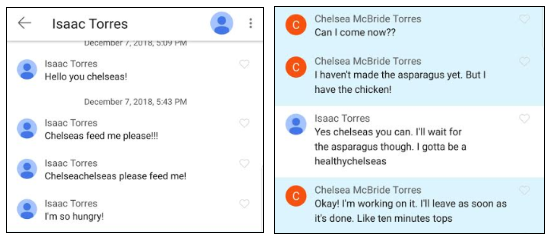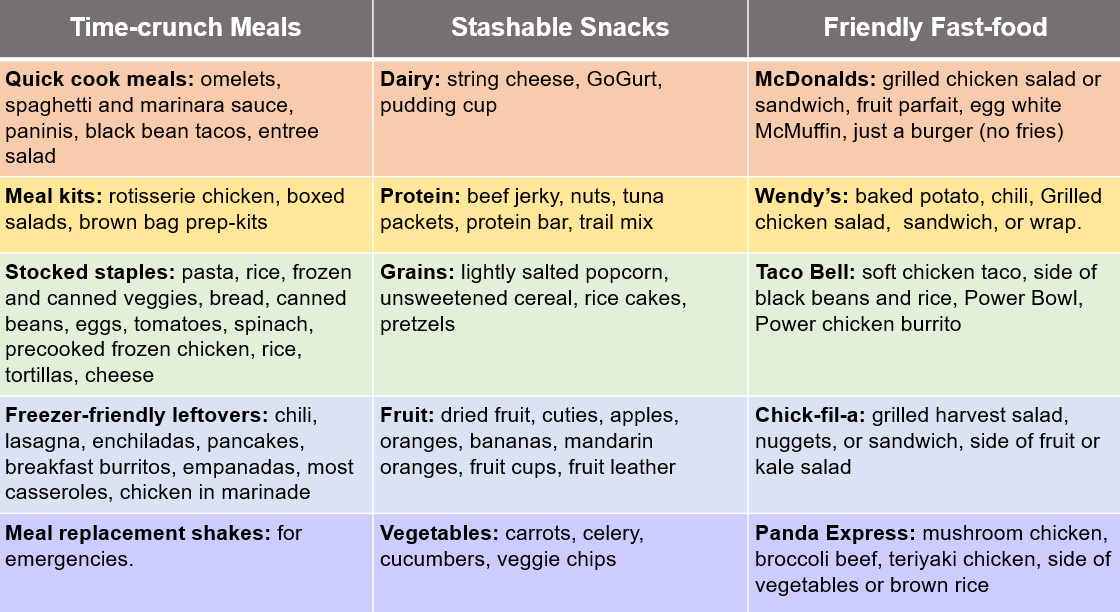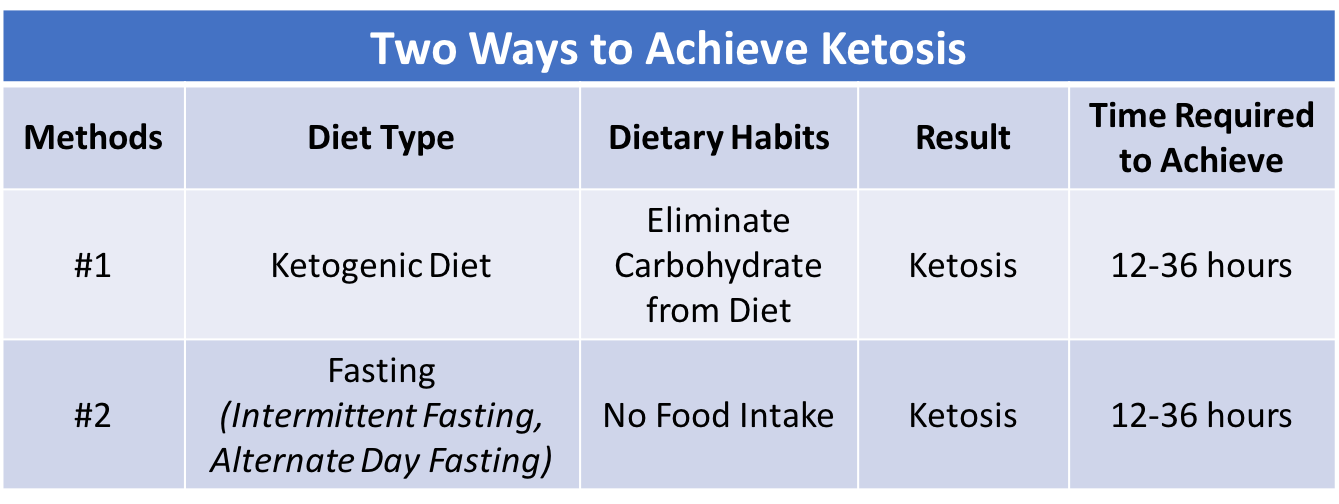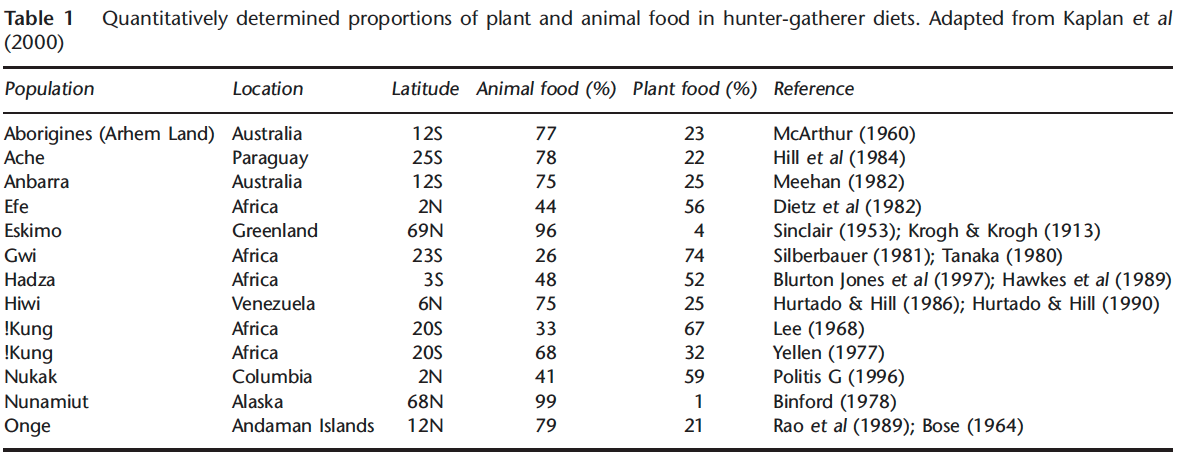When I mention carbs, fats, and proteins what comes to your mind? Carbs are bad for you, fat is good for you, and protein helps build muscle, right?
With today’s popularity of low carb or no carb diets, carbs have become villainized while fats are lionized. Open up your social media and it won’t take you long to discover that carbs cause inflammation, make you fat, and lead to diabetes. The social media “influencers” will have you believe that human beings were never intended to be eating carbohydrates and that carbs have been thrust into our food supply by big agriculture and other dark interests. It wasn’t that long ago that fat was the villain and carbs were the hero but what changed?
Figure 1: An Overview of America’s Food Supply & Fad Diets in the 21st Century.
To better understand why carbs were once the hero but now play the role of the villain I took a look into the evolution of food industrialization, fad diets, and their intersection to help us understand why carbs are being unjustly blamed for many of today’s health problems. The role of carbohydrates in our health is an extremely complex and nuanced topic, so I’m not going to be able to cover everything but I’ll do my best to distill down the history of food production and fad diets into a few highlights and seminal events to help you understand how and why carbohydrates came to be demonized and why our wrath may not be placed in the proper place.
The Evolution of Food Industrialization
Homo-sapiens as we know them today are ~315,000 years old, and have been hunting and gathering since the dawn of our existence. When we were hunter gatherers, calories were needed to survive, regardless of where they came from. At this time, food choices were made based on availability, not preference. A look at figure 2 below illustrates the diets of hunter gatherers from various regions.
How Hunter-Gatherer Diets Vary by Geography
The transition from hunting to settling into communities and farming started some 10,000 years ago, and by 400 BC the vast majority of us had fully settled as farmers, and the diet consisted mostly of vegetarian food with the occasional meat.
Fast forward to the industrial age in America (1850-1900) where the advancement in machinery and increase in people living in urban areas transitioned the practice of local small-scale farming to large commercialized farms. During this time, westward expansion was occurring, which allowed the country to create large farms in the Midwest and transport food via the railroads throughout the country. The advances in machinery made it streamlined to produce and harvest corn, wheat, and soy efficiently and the production and transport of these items quadrupled during this time. Along with a surplus of grains came grocery stores. Now people could go to a store to get their food as opposed to relying on a local harvest. A paradigm shift in America had occurred; for the first time, people had quick access to a variety of food.
With this industrial age, the diet moved away from regionally cultivated produce and livestock to more grain-based. Grain foods such as cereal, pasta, and rice were readily consumed (these foods contain much more carbohydrates than fruits and vegetables). By the mid-1940s, food manufacturers had figured out a way to freeze and can food. These items were marketed as luxury products, and only the wealthy could afford them. Between 1948-1958, the number of supermarkets and suburban communities doubled. The 50s were a prosperous time in America, and the price of processed foods decreased. These foods were now marketed towards women as a quick and easy way to make a tasty meal for the entire family.
It should also be noted that during this time a link between saturated fat and heart disease was becoming apparent, so the American Heart Association (AHA) began placing an emphasis on decreasing fat and cholesterol consumption. This meant that high saturated fat and/or cholesterol containing foods such as red meat, cheese, and eggs were to be limited and more emphasis was placed on consuming carbohydrate rich foods as opposed to eating high fat foods. Food marketers advertised these convenience items as healthier, lower fat, and higher quality than whole foods. However, these low-fat products inevitably had more carbohydrates in them. None the less, the marketing instilled in Americans that buying them demonstrated your family was living a healthy prosperous lifestyle.
In the 1960s consumers were now being marketed to eat out at restaurants and fast food stores and McDonald's started to gain traction across the country. The number of Americans preparing food at home began to decrease as the number of Americans eating out started to increase. Major processed foods and beverages such as Tab, Diet Pepsi, Pringles, and Gatorade began gaining popularity. This decade marked another paradigm shift in American's eating habits from preparing and eating in the home to eating out or grabbing prepackaged food from stores. The graph below, compiled from the USDA’s food trends report data, demonstrates the trend towards eating out versus in the home between 1954-2014.
Figure 3: More of Our Meals are Eaten Outside of the Home than Ever Before. Some Estimates Suggest that We Now Eat >50% of Our Meals Outside of the Home.
This trend and focus on convenience and prepackaged foods only continued to pick up speed in the 1970s. Now, boxed dinners from hamburger helper and Betty Crocker made home-cooked meals quicker. Also, high fructose corn syrup was now being regularly added to beverages and processed foods. Food advertisers focused their efforts on processed and unhealthy foods.
As we move into the 1980s and 1990s, it almost seems like whole foods are a thing of the past. The microwave has become a household staple and ketchup is now considered a vegetable within the school lunch program. On top of that the first genetically modified crop was developed in the 80s and genetically modified foods were put on the shelves in the 90s. The country was starting to experience the onset of the obesity epidemic and low-fat foods like Lean Cuisine and chips containing olestra were brought to the masses. Although the low-fat movement in processed foods started in the 1950s, the advancement in food chemistry, additives, and technology allowed for an abundance and variety of prepackaged low or non-fat foods in the 1980s and 1990s. In an effort to maintain flavor but reduce fat, refined grains and sugar were added to these products.
The pinnacle of food industrialization and evolution appears to be evident by the end of the 1990s and early 2000s. Much of the population live in urban or suburban areas with easy access to grocery and convenient stores. Americans now have an abundance of ready-made pre-packaged food at their fingertips. Food industrialization changed the landscape on choices and preparation. Americans don’t have to worry about tending to a garden or making time to cook dinner, meals can simply be bought at the grocery store and heated up in the microwave within minutes or easily obtained through a fast food drive through.
Fad Diets Throughout American History
Fad diets have been around for 100s of years. The number of diets that people have tried throughout the decades are countless, so I am going to go over the ones that appear to be most popular throughout the decades in industrialized America.
The 1900s through the 1930s saw a range of diets aimed mostly towards women. In the 1900s Horace Fletcher started the Fletcherism diet. This purpose of this diet was weight loss by eating as much as you would like as long as you took about 100 bites of each mouthful of food. Then, in the 1920s the article “Diet and Health With Key to the Calories” introduced the concept of calorie counting to people. This article became mainstream. Following that, in the mid 1920s Lucky Strike Cigarette created a campaign focused towards women urging them to reach for a Lucky instead of a sweet. The major diet of the 1930s was the Grapefruit diet and was a low-calorie plan that called for eating a grapefruit with each meal in effort to lose weight.
The 1950s through the 1970s brought on more diets and was the introduction of the one diet that is still mainstream today, the low-carb diet. In 1953, Doctor Pennington introduced one of the first carbohydrate-controlled diets that allowed for only a small portion of potatoes. Also, in the 1950s the cabbage soup diet was widely used. This diet promised people they could lose 10-15 pounds by restricting food intake and eating mostly cabbage soup. In the 1960s Weight Watchers was first introduced and gained traction. This diet is still popular today and teaches people to focus on counting calories (points) as an eating management strategy. Following that, the 1970s decade started with the cookie fad diet. This was a cookie made by a doctor that had a secret blend of amino acids and promised to help control hunger and enable people to stick to a low-calorie diet. Elvis then popularized the sleeping beauty diet in the mid-1970s. This diet put emphasis on sleeping to control hunger and lose weight. The 70s concluded with the introduction of slim fast shakes as meal replacements helping to keep you fuller longer, reduce calories, and lose weight.
The 1980s and 1990s saw the onset of diets and convenience foods marketed as healthy to try to undo the increase in obesity that was on the rise. In the mid-80s, the "Fit for Life" diet prohibited complex carbohydrates and protein from being eaten in the same meal, here the emphasis was not about what you eat as opposed to when you eat it. Then, in 1985 the Paleolithic nutrition book was published, which called for avoiding processed foods, grains, and dairy. Controlling when to consume carbohydrates along with staying away from processed foods and grains, both which contain carbohydrates, help set the tone around carbohydrates for the 1990s.
The 1990s was the era of low fat and low carb. During the 90s the Atkins diet gained popularity, this way of eating adhered to low carbohydrate high protein food. Then the book "Eat More Weight Less" became a commercial success. Here, the focus was on a plant-based diet involving mostly whole foods. Later on, in the 90s, the Zone Diet became mainstream and this diet consisted of having each meal with 40% carbohydrates or less plus an emphasis on lean meats and unprocessed foods. Some physicians and then the public during this era had started to go against the low-fat diet suggestions from the AHA in the 50s. The 90s were a turning point for how carbs would be viewed years to come. America had a supply of grains from large industrial farms and just too many calories in abundance per person. In effort to simplify dietary advice for the masses, key health leaders took a 180 degree approach and went anti-carb. Just like the carbohydrate-controlled diets of the 80s, the low carbohydrate diets of the 90s mainly had a focus on whole foods with minimal prepackaged or convenience foods.
The popular diets of the 2000s to present like South Beach and Keto, include low carbohydrate, plant-based, whole foods, or a combination of all three. This decade brought back the diet of our ancestors with whole foods and plant based but did so in a somewhat misguided fashion.
Overlap in Fad Diets and Food Industrialization
It appears that there is a correlation between the industrialization of food and the evolution of fad diets, particularly carb-controlled diets. The 1950s saw the advent of processed, low fat foods where carbs where added, and convenience foods were equated to health. The decade’s diets were focused on restricting food intake and low carb. This makes sense since low fat foods contain additional refined grains and Americans had more food available to them at grocery stores than they ever did in the previous decades.
The 1960s saw the increase of eating meals outside the home. Fast food restaurants started to pop up throughout the country. Now Weight Watchers was introduced as a program that taught people how to manage food intake. This program can be seen as a reaction to help consumers learn how to eat when they are outside of the home and have plentiful options.
Following that, the 1970s saw a trend where boxed dinners became the norm, the per person daily calorie intake was increasing and the amount of food available per person was the most it had ever been. Food companies tried to help Americans by offering lighter versions of their favorite foods. Popular diets at the time were low calorie or foods or methods to help a person stay away from eating or feel fuller longer to reduce the amount they ate.
The 1980s and 1990s was the introduction of the household microwave, ketchup as a vegetable, genetically modified foods, and low-fat packaged food. This is when the availability of processed, convenience foods appeared to be at its peak and obesity was starting to be seen as an epidemic. As mentioned before, these types of foods are high in added sugar and refined carbs. During this time many carb-controlled diets became popular as were diets that focused on eating more whole foods and plant based.
Throughout history it seems like these fad diets have come to popularization in an effort to help people try to manage the newest advances in food composition and abundance. From the 2000s to now the focus is on low carb and plant based. It seems as though we are now trying to eat a diet rich in whole foods and go back to having an eating pattern similar to that of our ancestors. The whole foods dietary patterns makes sense as now America has an understanding of what consistent consumption of prepackaged convenience foods does to their long term health.
Conclusion
In reviewing how America became concerned with how many carbohydrates they consume, it can be inferred that this concern stemmed due to the rise, affordability, and accessibility of prepackaged and convenience foods. Prepackaged and convenience foods are ultra-processed and highly palatable. The more palatable a food is, the more of it you are likely going to consume. In fact, this was exemplified in a study published this year by Kevin Hall in Cell Press showing that when macronutrient (carbs, fats, proteins) percentages are identical between ultra-processed and unprocessed diets for 14 days and people are allowed to eat as much as they want per meal, those on the ultra-processed diet ate an average of 500 calories more per day than the unprocessed diet. Figure 4 below shows the results from this study.
Now, the question is, do you know what is a processed food? Where does your food come from? How it was made? I know with the abundance of food options, food manufacturers, diets, and messages on social media platforms it can feel really overwhelming and confusing to sort this all out. This is why registered dietitians (RDs) exist. It takes time, energy, and effort to accumulate the knowledge and skills to sort through the science and evidence-based research to figure this all out.
So, if you are seeking individualized answers on how to craft a balanced diet that’s suitable to your lifestyle reach out to an RD.
In the meantime, try to keep in mind that the total number of calories in our food supply has led to obesity, not carbs per se. Carbohydrates are a macronutrient; they provide us with energy, help our central nervous system and muscles function, and aid in fat metabolism among many other roles they play in our bodies. If you are concerned about eating “too many” carbs try to shift that focus to being concerned about eating too much processed foods. When you look at how many calories there are in our food system both carbs AND fats are to blame (Figure 5).
We have been eating carbohydrates in some way, shape, or form for 315,000 years and counting. Now that food is convenient, prepackaged, and plentiful we are saying carbohydrates are bad. Carbohydrates are not the villain; the villain may be the readily available empty calories from highly refined foods. From here on out let's focus our creating a future where the emphasis is on the types of foods we consume as opposed to drastically reducing or cutting out an entire nutrient group!
Julie Kent (MS, RD, December 2019)
References:
1. Rafferty JP. Just How Old Is Homo sapiens? Encyclopædia Britannica. https://www.britannica.com/story/just-how-old-is-homo-sapiens. Accessed July 30, 2019.
2. HUNTER-GATHERERS TO FARMERS. http://www.historyworld.net/wrldhis/PlainTextHistories.asp?historyid=ab63. Accessed July 30, 2019.
3. Big Business: Shopping an AAS Online Exhibition. https://www.americanantiquarian.org/Exhibitions/Food/shopping.htm. Accessed July 30, 2019.
4. How Highly Processed Foods Liberated 1950s Housewives. National Women's History Museum. https://www.womenshistory.org/articles/how-highly-processed-foods-liberated-1950s-housewives. Accessed July 30, 2019.
5. Smith LP, Ng SW, Popkin BM. Trends in US home food preparation and consumption: analysis of national nutrition surveys and time use studies from 1965-1966 to 2007-2008. Nutrition journal. https://www.ncbi.nlm.nih.gov/pmc/articles/PMC3639863/. Published April 11, 2013. Accessed July 30, 2019.
6. Processed Foods History: 1960s to Today. Modern Pioneer Mom. https://modernpioneermom.com/2012/07/05/processed-foods-history-1960s-to-today-2/.Published July 5, 2012. Accessed July 31, 2019.
7. Gina. America's Food Evolution; The Past 40 Years. America's Food Evolution; The Past 40 Years |. https://candidrd.com/2011/03/americas-food-evolution-the-past-40-years.html. Published March 31, 2011. Accessed July 31, 2019.
8. Diets Through History: The Good, Bad, and Scary. Health.com. https://www.health.com/health/gallery/0,,20653382,00.html?slide=135630#135630. Accessed August 1, 2019.
9. Harper. A Look Back at Fad Diets People Have Tried Over the Years. Harper's BAZAAR. https://www.harpersbazaar.com/beauty/diet-fitness/g15893190/popular-diet-the-year-you-were-born/?slide=30. Published November 13, 2018. Accessed August 1, 2019.
10. Blackmore W. The Diet of the 1980s May Be Why Americans Are So Fat Today. TakePart. http://www.takepart.com/article/2016/01/04/obesity-retro-report. Published January 4, 2016. Accessed August 13, 2019.
11. Hall KD. Ultra-processed diets cause excess calorie intake and weight gain: A one-month inpatient randomized controlled trial of ad libitum food intake. 2019. doi:10.31232/osf.io/w3zh2
12. Hall KD. Did the Food Environment Cause the Obesity Epidemic? Obesity (Silver Spring, Md.). https://www.ncbi.nlm.nih.gov/pmc/articles/PMC5769871/. Published January 2018. Accessed August 22, 2019.
13. Bentley J. U.S. Trends in Food Availability and a Dietary Assessment of Loss-Adjusted Food Availability, 1970-2014. USDA ERS. https://www.ers.usda.gov/publications/pub-details/?pubid=82219. Accessed August 22, 2019.

























